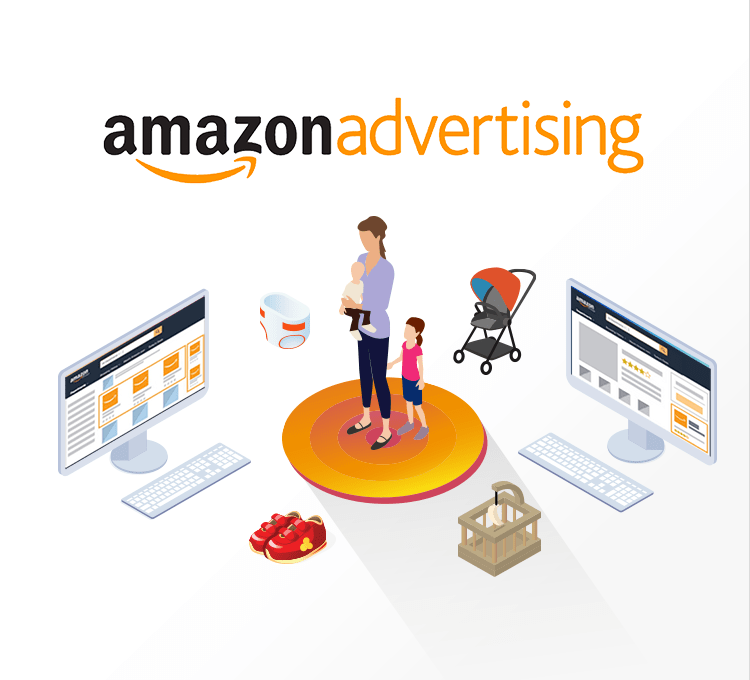Learn how a pandemic sales surge on Amazon led to zero profits for one seller. Dive into how Amazon’s aggressive ad strategy crushes seller profitability.

Amazon can smell the blood in Ads. And it’s going for it.
The week when pandemic hit, sales for my home commodities on Amazon had multiplied 3x over night. In two weeks, I was completely out of stock with what was forecast as 3 months of supplies. Since our manufacturing and supplies is from the Himalayas in Nepal which was in complete lockdown, there was no incoming inventory.
Technically this should have meant that I made all my revenues and profit for three months in three weeks. However when I sat down to reconcile my profit and loss, I discovered to my utter disbelief that my profits were almost non-existent. And the reason for this was that the cost of ads on Amazon had gone up 10x. Not only the cost of bids were 3x, there was almost 10x the clicks with much fewer conversions. Partly this can be attributed to bored “window-shoppers” browsing around Amazon looking for stocking up their essentials.
If this had happened two years ago, the cost of ads would have been negligible. So what changed in two years?
Ads. And the proliferation of Ads.
Amazon is now almost 100% focused on ads. In fact in the last one year as Seller Central lay in shambles, Amazon has made multiple improvements to it’s ads streams.
On the seller side, all the ads platforms have been consolidated into one and in the future will be moved off Seller Central into “Advertising Console”. New types of ads, Sponsored Brands, Display Ads have been launched and ad reporting has been significantly reformed.
On the consumer side, the ads have crept into almost all aspect of the site.
Consider the following search result

Or today’s(April 19th 2020) first page search result:

Almost one quarter of the search results are either sponsored ads or Amazon Brand (Amazon Exclusive).
The product detail pages are even worse. The infamous “Customers who bought this also bought” section is entirely gone or replaced exclusively with sponsored brands.
Each recommendation or suggestion is an ad click that earns Amazon more money and passing on all the charges to the sellers.

Selling on Amazon has become very similar to gambling in a casino. The lucky few get rich with the millions gambling away their fortunes in the hopes of making it big someday.
Unfortunately for majority of them, that day never arrives. More than three quarters of new sellers will give up selling on Amazon platform within the first two years after losing all their investment.
And ad costs makes up a significant proportion of their investment. Even with successful, rich sellers, Adcosts make up around 30% of their product costs which is factored into their price. Every time you click on Amazon, with the butterfly effect you are paying Amazon for it and so are the sellers. For an $100 worth of private label product sold on Amazon, the selling fees are almost $30 while the Ad costs are around $35.
In effect Amazon takes at the minimum of 65% of the product cost as it’s revenue.
The equivalent of this would be if Google had 4 sponsored results out of 10 and also charged websites for each click from most of it’s website.
So profitable are the ads with minimal investment, that it makes sense for Amazon to NOT sell a product and instead just let consumers click around. On every product detail page, new comparisons of how other products are better or alternatives or sponsored brands takes you on a wild goose chase with every click earning $1-$3 and sometimes more. A consumer clicking an average of 5 times is the equivalent of Amazon selling one product.
And during these lockdown when inventory is scarce, when consumers are clicking around, it only serves Amazon to reduce consumers from buying stuff. So this article about Amazon attempting to reduce people buying? Yes, the less you buy the more profitable it is for them due to the simple fact that clicking around on Amazon is charged to the sellers.
It is much more profitable for Amazon if consumers clicked around and bought as less items as possible. New sellers dreaming of big some day spend more than 100% of their product costs with the aim of establishing their brands. Most fail and the house always wins.
Even worse is that returns are almost always borne by the seller. The amazon “A-Z” guarantee provided by Amazon that promises easy returns? That’s the sellers loss. Amazon goes so far as to charge the sellers for the selling fees, the ad costs, the returns costs and outrageously even the disposal costs for returned items. Sellers lose up to 200% or more of the product cost on every return. Buyers are hoarding up items and their returns are trickling in. Some returns are due to “missed shipment delivery dates” which are 100% Amazon’s fault but sellers are partly charged for it along with the inventory loss.
The returned inventory which are “sellable” are back to the musical chair of the ads game.
So technically, how does this happen and how is Amazon fine tuned for maximizing the profits?
- The critical aspect of all of this is “Bid Boost” by Amazon. You can set Amazon to increase your bids dynamically to up to 1000% (900% + 100%) more if the customer is likely to buy your product. If you set your bid to 20 cents per click, it could suddenly be boosted to $2 or even $20 per click if Amazon algorithm decides that the customer is more likely to buy the product.
- The second aspect is “Placement” which lets you choose where to place your product: Search results (close or loose match) and in product details page (substitutes or complementary). Even if you set the bid to the lowest level of few cents, all it takes is few hundred clicks to rack up substantial ad costs. And almost 100% of the clicks on product details are charged to sellers.
- The ad reports are not updated real-time except for the budget exhaustion message. This means that most of the day, you are flying blind having no idea how much you are spending on Ads. Amazon guarantees updates within 24 hours but anything less than real-time update is absolutely not ideal.
- The daily adspend is also not a guaranteed hard limit (similar to what Google does). Your daily adspend is averaged over the month and usually results in days where you overshoot the budget that you set.
- The final unsubstantiated part of our research is that Amazon credits Ads with sales that are much more than what it really is. Organic clicks if they appear on the same page as ads are attributed to ads. Fraudulent clicks are not expunged giving the impression that your ads are performing much better than reality. We have seen this on multiple instances and even the Amazon ads API corroborates our finding but in the absence of any official response it is impossible to be sure.
Post Mortem Analysis of our Ecommerce business:
In the two weeks of initial lockdown here in Canada, I was frantically trying to work with my suppliers from Nepal which was not only in complete lockdown, even the neighbouring country, India, from which the goods are air lifted was in complete lockdown. I logged on to Amazon to check the balance of my account revenues and discovered that ads had substantially reduced my profit margin. For some products, even selling 10x more was a loss.
This can mostly be blamed on not checking the ads continuously and making sure the bids are lowered to reduce ACOS and then bids are raised when I want to increase sales later.
It’s a mundane drone job, regularly going through all the campaigns, ad groups, placements and thousands of keywords. And this is when I decided to work on automating the bids for Amazon PPC.
A week, multiple cups of coffee and plenty of Skype calls with other sellers who faced same issue and I had enough motivation to create this AutoPilot for Amazon Ads.
At it’s core, you set a target percentage of ad costs and the bids will be reduced/increase gradually and continuously until the target ACOS is hit. From there on, the bids are periodically tweaked to maintain the target ACOS.
All I had to do was to integrate the Amazon ads API into this forecasting tool and simple algorithms to reduce bids every couple of hours to maintain target ACOS.
I also already had a forecasting platform for Amazon so I had analytical data of how much I am going to sell for each day in the future and also at what time.
I can also boost bids slightly higher during what I forecast as “peak hour” and suppress bids during “off peak” hour/days.
A short video of me demonstrating it
If you would like to see all the auto-tuning parameters, I have covered them in detail here
Amazon and all ad platforms must de-facto provide “circuit breakers” to ensure that ad spend remains at reasonable level compared to the cost of goods. But they are all moving in opposite direction by delaying the reports, obscuring the data and making it harder to control the spend.
There are no winners except the ad platforms in the game of ads. Both the consumers and sellers pay for the ad costs one way or the other. Sellers raise their prices and pay Amazon their excess margins.
Ads are the most profitable aspect of almost all businesses and as it’s power grows, the well established business find a strong grip-hold that makes it even harder to dislodge.
The pandemic has catapulted Amazon to its greatest heights but also exposed its vulnerability in the logistics side. It’s time Amazon focused more on what its platform is supposed to be, a retail platform rather than an ad infested money grabber. Their seller support has supported us par excellence in everything from inventory delays, tracking lost parcels and logistic errors.
I dread the day when Amazon will follow Google to their ban-spree & zero customer support route.
(guest post from one of our ecommerce clients)

